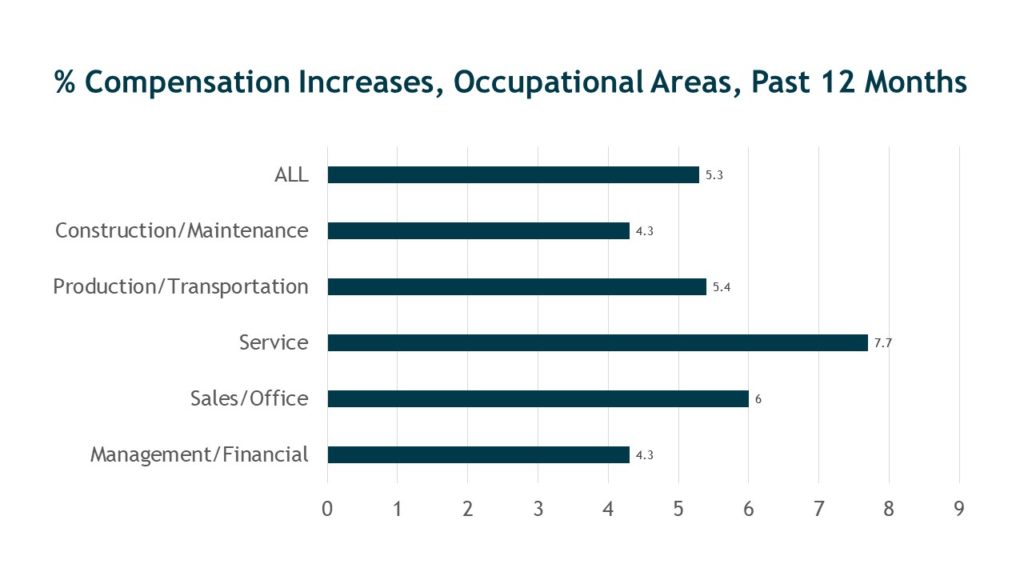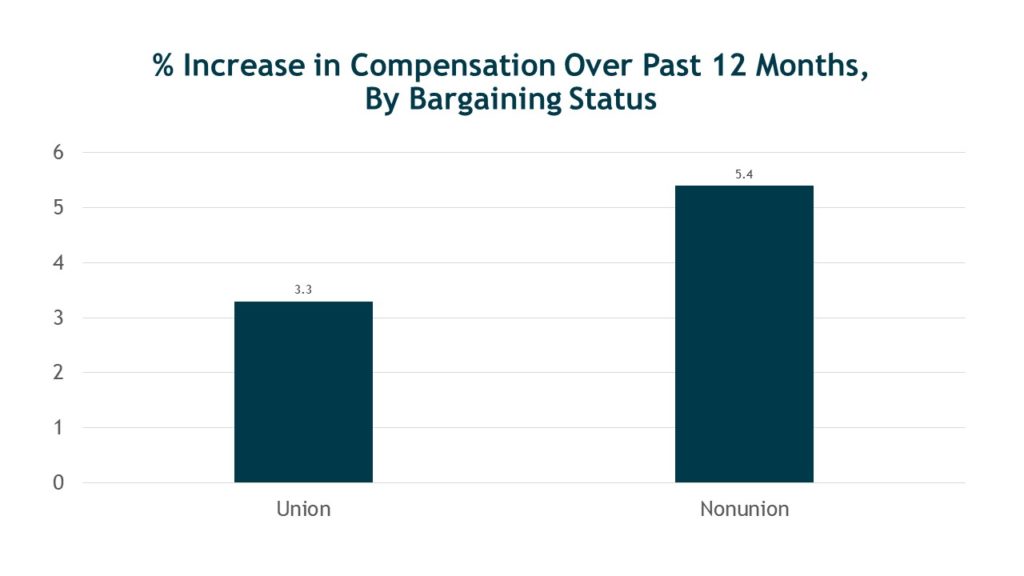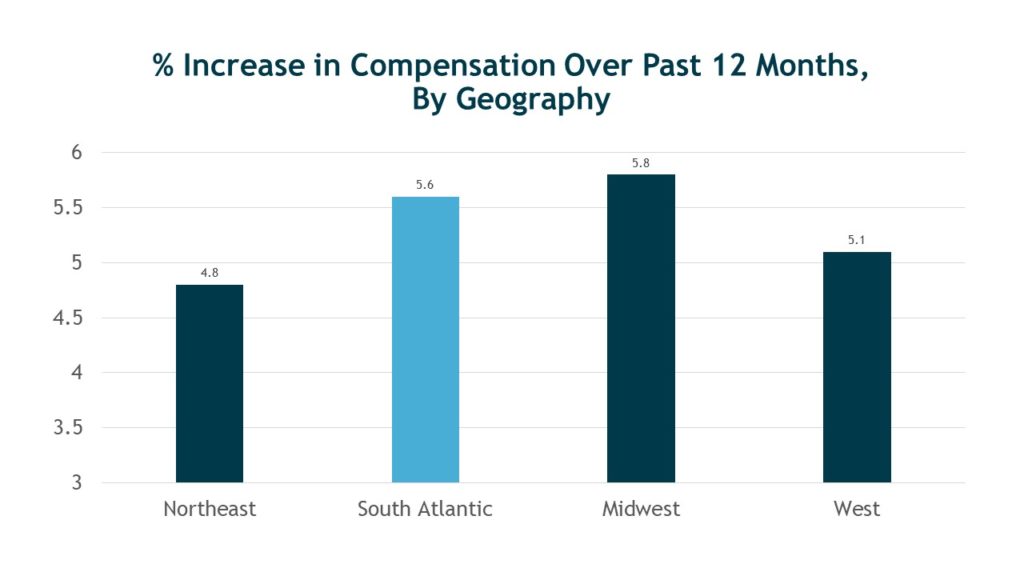Staying Competitive: Compensation and Inflation in North Carolina

In a historically tight labor market, employers are looking at different strategies to both attract and retain talent. When it comes to retention, compensation is one important tactic, especially during a period of inflation. Other retention tools include a focus on upskilling and upward mobility.
Employers have started to invest in their current workforce and workplace culture before focusing on recruiting new talent. This includes offering mental health support, rethinking traditional schedules and pay structures, as well as implementing wrap-around supports.
Data is essential to this effort. Employers are measuring talent flow and where top talent is coming from, in addition to analyzing internal talent to understand the training and experience that contribute to their success on the job.
While retention is a long-term effort, in the short term, the fact remains: money talks. I have talked to many different business leaders recently who are adjusting compensation as a talent retention tool. We worked with Dan Gerlach, economic advisor to the NC Chamber Foundation, on this month’s Foundation Forecast, which delves into the economic data around compensation in our current economic environment.
Meredith Archie
President
NC Chamber Foundation
Staying Competitive: Compensation and Inflation in North Carolina
What happens when demand for goods and services remains strong and growing while the supply of goods and services is interrupted or otherwise reduced? Prices increase. It’s the first principle of basic economics.
Nobody likes to pay more for goods and services. While the Federal Reserve is working to reduce inflation while not causing a recession, it will take time for adjustments to occur.
Employers face a substantial challenge. Not only are the costs of the inputs they buy from suppliers increasing, but their employees also face higher costs as consumers and want additional compensation as well. At a time when there are more jobs than there are people ready, available, and willing to work, employers must pay heed or risk losing experienced, capable workers.
The increases in compensation are greater for service occupations than others, showing that it’s not management that is receiving outsize increases. The Bureau of Labor Statistics recently released new data showing an average compensation increase of 5.3%. [1]

Some contend that North Carolina’s lack of labor unions and place in the South make the state less worker friendly. The data from the federal government does not bear that out. In fact, the rate of increase in compensation for nonunion employees was 63% greater than the rate of increase for unionized employees.

Moreover, worker compensation increases in the South Atlantic region, which includes North Carolina (the bright blue bar in the graph below), trailed only the Midwest and exceeded the West and the Northeast over the past 12 months.

In sum, North Carolina employers are increasing compensation for their workers as the state continues to lead the nation as a best place to live and work. While inflation still outpaces our ability to catch up, businesses are taking steps to help their workers in these changing times.
[1] All the data cited in this report comes from the Employment Cost Index – September 2022, US Bureau of Labor Statistics, Released October 28, 2022, Tables 5 and 6 are specifically used.